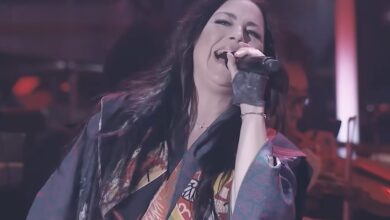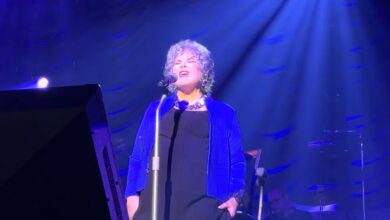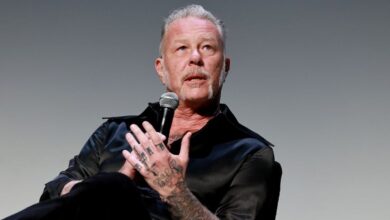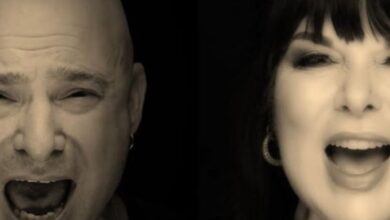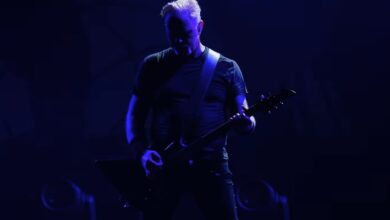Steven Tyler and Slash Deliver a Standout “Dream On” Performance
Howard Stern’s 60th birthday bash took place on January 31, 2014, at New York City’s Hammerstein Ballroom—an all-star, four-and-a-half-hour celebration that mixed comedy, celebrity roasts, and marquee music moments. Among the most talked-about performances of the night was Steven Tyler teaming with Slash and Train for a soaring “Dream On,” tailored for the room and the occasion.
The event drew a long list of A-listers from across entertainment—Dave Grohl, Jon Bon Jovi, John Fogerty, Sarah Silverman, Jimmy Fallon, Jimmy Kimmel, and many more—setting a high bar for surprises and collaborations. Against that backdrop, the “Dream On” cover stood out because it merged classic rock pedigree with a tight, television-ready house band arrangement that served the song rather than overshadowing it.
“Dream On” itself needs little introduction: Aerosmith’s breakthrough power ballad, written by Tyler and released in the 1970s, has remained a concert centerpiece for decades. Bringing it to a gala built around Stern’s radio legacy made narrative sense—an anthem about perseverance and ambition delivered to one of broadcasting’s most durable figures, with the song’s author at the piano and mic.
For the bash, Train functioned as the house band, a role that required significant prep and adaptability. The Stern Show later noted that Train blocked out two full days just for rehearsals and soundchecks to back a revolving door of guests. That advance work helped the “Dream On” arrangement feel locked-in despite its one-off nature and multiple star contributors.
When the performance rolled, Tyler took the familiar lead, opening on piano before unleashing the high-wire vocal peaks that define the recording. Slash added the Gibson-crunch and melodic filigree fans expect, while Train held the foundation—piano, rhythm section, and dynamics that swelled exactly where a gala setting needed them to crest without muddying the vocal. Video released by the Stern Show captured the moment as it aired.
Because the bash was curated like a live broadcast, the “Dream On” cover was paced with television sensibilities: tight camera-friendly cues, crisp transitions, and a mix that favored the vocal message. Rather than stretching into an arena-length jam, the team delivered a compact version that hit the verses, the famous pre-chorus lift, and the climactic finale with precision.
The setting also mattered. Hammerstein Ballroom’s theater acoustics—less cavernous than an arena, more resonant than a club—contributed to the song’s clarity. In that space, Tyler’s top-register lines came across as dramatic rather than harsh, and Slash’s lines sat on top of Train’s backbeat with definition, providing the kind of fidelity Stern’s team aims for in event broadcasts.
If the “Dream On” cover supplied the gravitas, the night’s broader arc put it in context. Elsewhere in the program, Tyler also roared through “Walk This Way,” with additional firepower from Dave Grohl, highlighting how the producers sequenced familiar hits in ways that kept the energy shifting between celebration and homage throughout the evening.
Documentation of the show confirms how the collaboration was billed and credited. The IMDB entry for the broadcast lists “Dream On,” written by Steven Tyler and performed by Steven Tyler, Slash, and Train, reflecting the precise talent line-up that viewers saw and heard in the final cut. That crediting aligns with the house-band model used throughout the program.
Train’s role as the through-line made the marquee pairings possible. In interviews and Stern Show recaps, the band’s members have described the bash as logistically intense—quick-change transitions, cue-heavy charts, and a guest list that required switching styles on a dime. The “Dream On” segment benefited from that readiness; the rhythm section supported Tyler’s rubato phrasing in the intro and locked to Slash’s feel once the drums came in.
Audience reaction became part of the performance’s legacy. The combination of Tyler’s authorial voice, Slash’s instantly recognizable tone, and Train’s steady pulse created the kind of cross-generational rock moment that travels well online. In the years since, the Stern Show’s upload has circulated repeatedly across platforms, introducing the collaboration to viewers who didn’t catch the live broadcast.
As with many Stern tentpoles, the night wasn’t designed around any one song so much as the cumulative impact of curated moments. Yet “Dream On” resonated because it married authenticity—Tyler singing the song he wrote—with novelty: hearing it reframed by players outside Aerosmith. That balance of fidelity and freshness is exactly what such tributes try to achieve and often miss.
It’s also notable how the finale pieces interlocked. Hennemusic’s contemporaneous recap notes that Tyler headlined the bash and, with help from Slash (and Grohl elsewhere), closed the night with Aerosmith classics, including “Walk This Way” and “Dream On.” The sequencing positioned “Dream On” as an emotional capstone rather than just another cover—structurally, the “farewell toast” of the music portion.
Historically, “Dream On” has marked important public moments for Tyler—benefit concerts, televised specials, and guest features—so its placement at a milestone event for Stern fits a wider pattern. Wikipedia’s consolidated record of the song’s live history logs the Stern Bash performance among those notable appearances, underscoring how the track functions as a kind of calling card in Tyler’s solo appearances.
Finally, the performance reflects 2014’s broader rock landscape. That same year, Aerosmith would announce the Let Rock Rule tour with Slash opening across North America, making their Stern collaboration feel like a preview of a summer defined by cross-pollination between those camps. In that context, the “Dream On” at Hammerstein wasn’t a one-off stunt; it was a snapshot of artists already orbiting each other on the road and on television.
